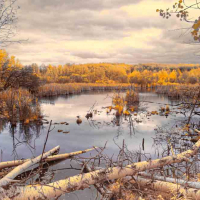Shooting against a dull, flat, white sky?
I could use some assistance with the following scenario...
The subject, an immature eagle, resting in a tree at about 12 feet high. Distance to subject was approx. five feet. Shooting up at subject, the background sky was flat white to a dull gray, overcast, no sun.
The eagle came out fairly dark, with no detail, against the dull, white background.
I tried several adjustments but still could not get "the shot" detailed enough or crisp enough.
What could I do differently next time, when posed with similar shooting conditions?
Thanks in advance for any insights, assistance, tips, etc.
The subject, an immature eagle, resting in a tree at about 12 feet high. Distance to subject was approx. five feet. Shooting up at subject, the background sky was flat white to a dull gray, overcast, no sun.
The eagle came out fairly dark, with no detail, against the dull, white background.
I tried several adjustments but still could not get "the shot" detailed enough or crisp enough.
What could I do differently next time, when posed with similar shooting conditions?
Thanks in advance for any insights, assistance, tips, etc.
0

Comments
Best thing is to shoot in AV mode, and use some positive exposure comp (EC+). You'll need a minimum of 2/3 of a stop most likely. With a bright sky, you made need to go well over 1 stop, almost 2 stops in some cases. Take some test shots of something stationary against the sky, then review the shot on your LCD. Repeat as necessary to get things dialed in. You most likely WILL be blowing out the sky in the process (blinkies going nuts). Can't be helped.
Two more tips: 1) Use matrix metering, not spot. Reason being, it can be quite difficult to keep the "spot" on the bird, especially if it moves. Much better to meter the whole scene, and get familiar with how much EC is typically required for a given situation. It's a good skill to develop. 2) Shoot RAW for best results, as it'll give you the most leeway in adjusting the exposure in post processing.
-joel
Link to my Smugmug site
Joel gave very good advice , and I do not use a Spot meter mode either, but Evaluative mode with + Exposure Compensation as he described. I usually shoot Av or Manual mode.
It is the bird that needs proper exposure, not the sky, and you could use spot metering for shooting birds on a stick to gain experience and understanding. It just does not work when they fly off and you want to get them in the air, as there is No Way to keep a spot meter on a BIF.
Birds on sticks, I got! Thanks to Harry and others who taught me all I know.
Moderator of the Technique Forum and Finishing School on Dgrin
THANKS Pathfinder, I appreciate your input. I might wait to practice multiple shots and the bird on a stick process when it is a bit warmer outside. Frozen fingres make for tough shooting!
El Gato
www.globaltrekk-photos.com
THANKS Joel, great tips and advice. As I mentioned to Pathfinder,
I might wait to practice multiple shots and the bird on a stick process when it is a bit warmer outside. Frozen fingres make for tough shooting and birds will be available even in the warmer spring weather. Eagles, although I will have to brave the cold and dress warmly. Thanks again for your insight.
El Gato
www.globaltrekk-photos.com
You'll thank me later.
Link to my Smugmug site
See you soon. I'll pm you as we get closer to Az.
Moderator of the Technique Forum and Finishing School on Dgrin
Looking forward to seeing you two and hooking up for some shooting when you make it out this way.
Take care and good travels.
-joel
Link to my Smugmug site
Good Luck and keep shooting
http://kadvantage.smugmug.com/
Thaks for your reply and helpfull information. I am headed out later this week for some time in the field and plan to incorporate yoru advice into my shooting. Thanks again for taking the time to reply.
El Gato
www.globaltrekk-photos.com
Thanks LiquidAir, I'll give this a try this weekend as I am headed out to try my luck with the big birds wintering over in the area.
El Gato
www.globaltrekk-photos.com
Thanks to Pahtfinder, LiquidAir, DsrtVW and others who replied to my question.
I was out in the FREEZING Missouri winter weather (not really that cold conisdering I have photograhed in Yellowknife, NWT in Feb., at -56c) and had a great time with my D300 and the advice received herein.
Here are some of the results of a day tracking eagles along the Missouri River. I have reduced the images to a size for easy of posting and file transfer, not quite sure what this will do to the final product, as shown here.
Thanks again, everyone for your insights and input.
El Gato
www.globaltrekk-photos.com
Here is photo #2
El Gato
www.globaltrekk-photos.com
Moderator of the Technique Forum and Finishing School on Dgrin